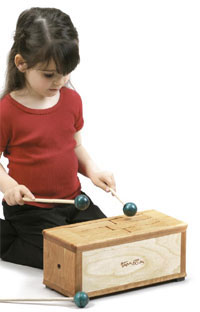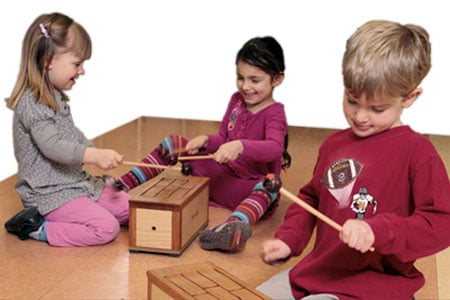
The Tamböa lends itself very well to musical awakening an interest in music. It distinguishes itself in this role from other instruments by the ease with which children can begin to produce harmonious melodies on it. Improvisation on the Tamböa encourages the expression of creativity and leads to a musical experience that is positive and fulfilling. Practice can be carried out solo, in pairs, or in groups of many Tamböas or a variety of instruments. Since it is tuned in a minor key, we suggest that you remove the keys on xylophones and metallophones that don’t correspond. Group improvisation is a good means for children to develop their social skills, as it encourages exchange, listening, leadership, co-operation, taking a stand, etcetera.
Musical experiments on the Tamböa allow a child to explore the role of rhythm in music. Once familiarity with this dimension has been achieved, the focus can be moved to more abstract aspects of music, such as awakening to musical sensibility, exploration of melody, judicious use of nuance, creation of a specific atmosphere, and use of different playing techniques.
The instrument is also of aid in the learning of basic musical principles such as beat, count and silences. It helps develop an understanding of simple harmonies as well as polyrhythms. The Tamböa fits in well with the Orff instrumentarium.
For these reasons, the Tamböa is more and more utilized in educational settings, and we invite you to discover it.

